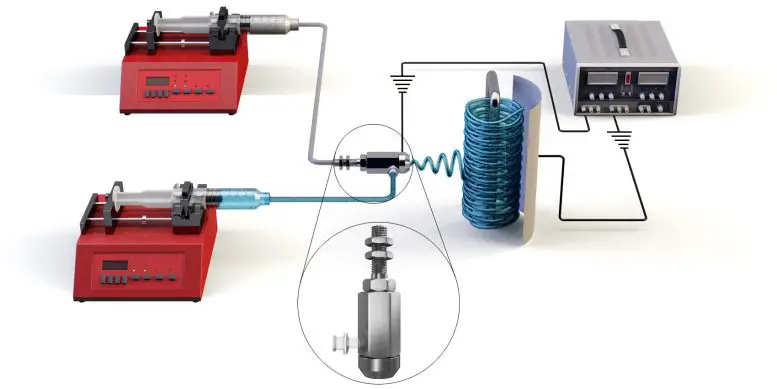An alternative seawater desalination membrane for producing drinking water.
The World Health Organization estimates that 785 million people lack access to clean drinking water. Even though there is a lot of water on Earth, most are seawater. Freshwater only accounts for 2.5%. Desalinating seawater is one way to make clean drinking water. Korea Institute of Civil Engineering and Building Technology has created a stable-performance electrospun microfiber membrane that can transform seawater into water through membrane distillation.
The most challenging problem in membrane distillation is membrane wetting. Membrane wetting indicates a membrane has been damaged or worn out. For long-term operations, progressive membrane wetting should be observed. A membrane that is too wet can cause inefficient membrane distillation performance. The membrane will also produce low-quality permeate through its feed stream.
Dr. Yunchul Woo is part of a research team at KICT that has created co-axial electrospun membranes made from nanofibers spun by another nano-technology called electrospinning. This desalination technology has the potential to solve the world’s water shortage. This technology can prevent wetting and improve the stability of membrane distillation. The nanofibers should form a three-dimensional hierarchical structure in membranes to provide higher surface roughness and better hydrophobicity.
Co-axial electrospinning is one of the easiest and most efficient ways to make membranes with hierarchical three-dimensional structures. Dr. Woo’s research team used poly(vinylidene fluoride-co-hexafluoropropylene) as the core and silica aerogel mixed with a low polymer concentration as the sheath to produce a co-axial composite membrane and obtain a superhydrophobic membrane surface. Silica aerogel had a lower thermal conductivity than conventional polymers: this increased water vapor flux and reduced heat losses during membrane distillation.
Although they had a high water vapor flux, most membrane distillation studies using electrospun nanofiber membranes lasted less than 50 hours. Dr. Woo’s research group applied the membrane distillation process with the co-axial electrospun microfiber membrane for 30 consecutive days. That is about one month.
The co-axial electrospun microfiber membrane could reject 99.99% of salt for one month. The membrane performed well despite wetting and fouling, owing to its low sliding angle, thermal conductivity, and other properties. One of the significant drawbacks to membrane distillation is temperature polarization. Conductive heat losses can cause a decrease in water vapor flux performance in membrane distillation operations. It is ideal for long-term membrane distillation applications because it has several key characteristics, including low sliding angle, low thermal conductivity, and avoidance temperature polarization. Additionally, it reduces wetting and fouling while maintaining high water vapor flux performance.
Dr. Woo’s research team found stability is more critical than high water vapor flux performance in commercially available membrane distillation processes. Dr. Woo stated that the co-axial electrospun microfiber membrane has a solid potential for treat seawater solutions without wetting issues. It may also be suitable for pilot-scale or real-scale membrane distillation applications.

